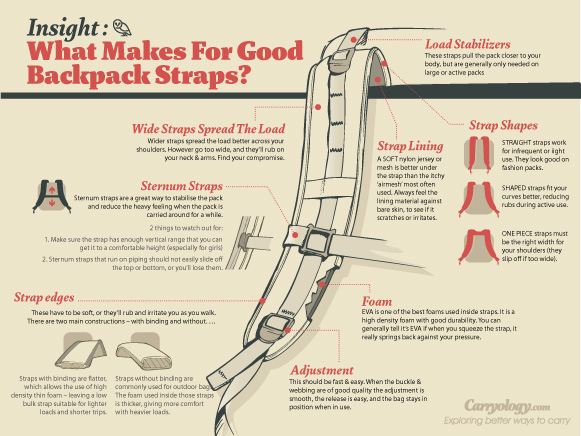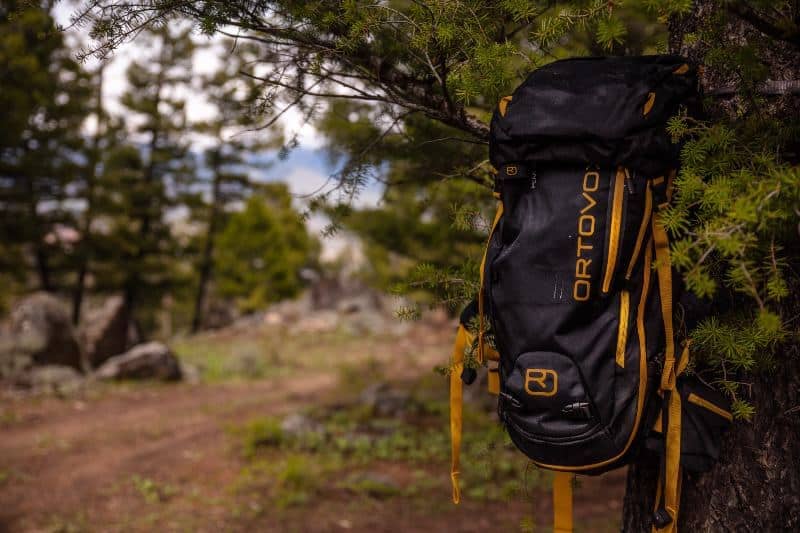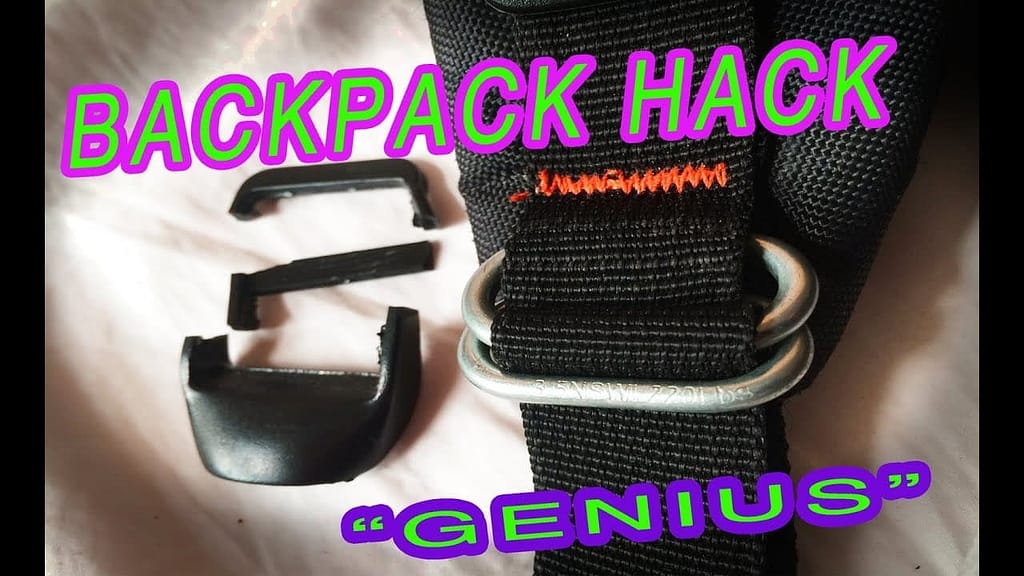The introduction section of the ultimate guide on how to fix backpack strap provides an overview of the common problems that people may encounter with their backpack straps. This includes damaged or broken buckles and adjusters, ripped or torn straps, weak or loose connections, and general maintenance and prevention.
It emphasizes the importance of properly functioning backpack straps for comfort, convenience, and safety while carrying a backpack. The section also highlights the significance of promptly addressing strap issues to ensure the backpack’s longevity and reliability.
Overview of the Common Problems How to Fix Backpack Strap

Common problems with backpack straps include damaged or broken buckles and adjusters, ripped or torn straps, weak or loose connections, and general wear and tear. These issues can greatly affect the functionality and comfort of the backpack.
Damaged buckles and adjusters can make it difficult to secure the straps properly, while tears in the strap fabric can weaken its strength. Weak or loose connections can cause the strap to detach from the backpack, posing a safety risk.
Regular use of a backpack can also lead to general wear and tear, such as fraying the fabric or loosening stitching. Proper maintenance and prompt repairs are essential to ensuring how to fix backpack strap’s reliable and comfortable use.
Importance of Properly Functioning Backpack Straps
Properly functioning backpack straps ensure comfort and safety while carrying a backpack. They distribute the weight evenly across the shoulders and back, reducing strain and preventing discomfort.
Securely fastened straps also prevent the backpack from shifting or swinging during movement, enhancing stability. Additionally, well-functioning buckles and adjusters allow for easy customization of the strap length to fit individual preferences and body sizes.
Individuals can enjoy a more comfortable and supportive carrying experience with properly functioning straps, reducing the risk of muscle strain or injury. Therefore, promptly addressing any issues with how to fix backpack strap to maintain optimal functionality is essential.
Basic Troubleshooting
Basic troubleshooting involves identifying and resolving common issues with backpack straps. To begin, carefully examine the strap for any visible damage such as fraying, tears, or loose stitching.
Adjust the strap length and position to ensure a proper fit if it is too tight or uncomfortable. Test the buckles and adjusters to see if they are functioning correctly. If these components are damaged or broken, they may need repair or replacement.
Additionally, reinforce weak or loose connections by tightening stitching or reinforcing weak points on the strap. Individuals can address common strap problems and restore their backpack’s functionality through how to fix backpack strap basic troubleshooting techniques.
Identifying the Issue With the Backpack Strap

To effectively troubleshoot how to fix backpack strap issues, it is important first to identify the problem. Start by visually inspecting the strap for any visible damage, such as fraying, tears, or loose stitching. Take note of any buckles or adjusters that may be malfunctioning or broken.
Pay attention to the overall fit and comfort of the strap to determine if adjustments are needed. By carefully examining these factors, individuals can pinpoint specific issues with their backpack straps and move towards finding the appropriate solutions.
Adjusting the Length and Position of the Strap
To ensure optimal comfort and functionality, it is essential to adjust how to fix backpack strap length and position. This can be done by loosening or tightening the strap using any adjustment buckles or sliders that may be present.
Carefully evaluate the fit of the strap by wearing the backpack and making adjustments as needed. The strap should rest comfortably on the shoulder without digging in or slipping off.
Additionally, check that the position of the strap aligns with your body’s natural posture for maximum support. Taking these steps can greatly improve your backpack strap’s overall fit and usability.
Repairing Buckles and Adjusters
When fixing backpack straps, one common issue is damaged or broken buckles and adjusters. To repair them, identify the problem with the buckle or adjuster. This could include a cracked or missing piece, loose screws, or damage to the locking mechanism.
Once identified, follow these steps on how to fix backpack strap: 1) Clean any dirt or debris from the area. 2) Use epoxy adhesive or hot glue to secure loose screws or small cracks. 3) If a part is missing or irreparable, replace it with a new buckle or adjuster. By taking these steps, you can restore functionality and ensure your backpack strap is secure and adjustable.
Steps to Fix Damaged or Broken Buckles and Adjusters
When facing damaged or broken buckles and adjusters on a backpack strap, it is important to take the necessary steps on how to fix backpack strap to repair them. First, clean any dirt or debris from the affected area.
Next, use epoxy adhesive or hot glue to secure loose screws or mend small cracks. If a part is missing or irreparable, it must be replaced with a new buckle or adjuster. By following these steps diligently, one can restore optimal functionality and ensure the backpack strap is secure and adjustable.

Replacing Broken Buckles or Adjusters
When dealing with damaged or broken buckles and adjusters on a backpack strap, it may be necessary to replace them. To do this, identify the type and size of buckle or adjuster needed. Then, search for replacement parts at a local outdoor store or online.
Once you have the new buckle or adjuster, remove the old one from the strap using a seam ripper or sharp scissors. Attach the new buckle or adjuster by threading the strap through it and securing it in place according to the manufacturer’s instructions. This will ensure that your backpack strap is fully functional once again with how to fix backpack strap.
Fixing Ripped or Torn Straps
When faced with a ripped or torn backpack strap, it is crucial to address the issue promptly to prevent further damage. For minor tears or frays in the strap fabric, use a needle and thread to mend the damaged area. Start by securing the tear with small stitches, firmly holding it together.
Additionally, reinforce the surrounding areas for added strength and durability. However, replacing the strap is the best solution if it is completely torn or beyond repair. Look for replacement straps that match your backpack’s style and dimensions to ensure a proper fit and restore functionality to your backpack with how to fix backpack strap.
Mending Minor Tears and Frays in the Strap Fabric
When faced with minor tears or frays in the strap fabric of a backpack, it is important to address them promptly to prevent further damage with how to fix backpack strap. Start by securing the tear with small stitches using a needle and thread to mend these issues. Ensure that the tear is firmly held together.
Reinforce the surrounding areas by stitching around the damaged section for added strength and durability. This will help prevent the tear from worsening over time. These simple steps can repair minor tears and frays in your backpack strap, extending its lifespan and functionality.
Replacing a Completely Torn or Irreparable Strap
When a backpack strap is completely torn or beyond repair, it is necessary to replace it to ensure the functionality and longevity of the backpack with how to fix backpack strap. To do so, remove the damaged strap from the backpack. Measure the length of the new strap needed, ensuring it matches the original strap.
Attach one end of the new strap using sturdy sewing techniques such as double stitching or heavy-duty adhesive. Finally, secure the other end of the strap to any buckles or adjusters on the backpack for proper fitting and adjustability. Replacing a completely torn or irreparable strap will allow you to use your backpack confidently and comfortably.
Reinforcing Weak or Loose Connections

It is important to tighten any loose stitching or connections to reinforce weak or loose connections on backpack straps with how to fix backpack strap. This can be done by using a needle and thread to stitch any areas that have become undone securely.
Additionally, reinforcing weak points on the strap can be achieved by adding extra layers of fabric or using adhesive patches for added strength. By promptly addressing these weak or loose connections, you can ensure that your backpack straps remain durable and secure.
Regularly checking and reinforcing these connections will help prevent further damage and extend the lifespan of your backpack straps.
Tightening Loose Stitching or Connections
It is crucial to tighten any loose stitching or connections to reinforce weak or loose connections on backpack straps with how to fix backpack strap. This can be achieved by using a needle and thread to stitch any areas that have become undone securely.
By carefully examining the strap, one can identify any weak points or areas where the stitches may have come loose. With a firm hand and strong thread, these weakened sections can be reinforced, ensuring the backpack straps remain durable and secure during use.
Regularly checking and reinforcing these connections will help prevent further damage and extend the lifespan of your backpack straps.
Strengthening Weak Points on the Strap
To ensure the durability and longevity of your backpack straps, it is important to strengthen any weak points on the strap with how to fix backpack strap.
Weak points can occur due to wear and tear or excessive use. One effective way to strengthen these areas is by reinforcing them with additional stitches. Using a needle and strong thread, carefully sew around the weak point, creating a new layer of stitching that will provide added strength.
Doing so can prevent further damage or tearing in those vulnerable areas. Regularly inspecting and reinforcing weak points on the strap will help maintain the overall integrity of your backpack straps.
Maintenance and Prevention
Regular maintenance and prevention measures are essential to ensure the longevity and optimal functionality of backpack straps with how to fix backpack strap. Regularly inspecting the straps for any signs of wear and tear is important.
If minor tears or frays are detected in the strap fabric, promptly mend them to prevent further damage. Additionally, tightening any loose stitching or connections will help maintain the overall integrity of the straps. Properly caring for and storing your backpack is also important to prevent unnecessary strain on the straps.
By implementing these maintenance and prevention measures, you can extend your backpack straps’ lifespan and avoid potential future issues.
Tips for Maintaining and Avoiding Issues With Backpack Straps

To keep your backpack straps in optimal condition and avoid potential issues, there are a few maintenance tips to follow with how to fix backpack strap. Regularly inspect the straps for signs of wear and tear, such as fraying or tears in the fabric. Promptly mend any minor damages to prevent further deterioration.
Tighten loose stitching or connections to maintain their integrity. Additionally, taking proper care of your backpack and storing it correctly will help prevent unnecessary strain on the straps. By implementing these preventative measures, you can extend the lifespan of your backpack straps and enjoy hassle-free adventures.
Proper Care and Storage of Your Backpack
Proper care and storage of your backpack is crucial for maintaining the condition and functionality of the straps with how to fix backpack strap. When not in use, storing your backpack in a cool, dry place away from direct sunlight is recommended.
Avoid hanging it by the straps, as this can cause unnecessary strain. Instead, lay it flat or hang it from a sturdy hook or hanger. Use mild detergent and warm water to clean your backpack regularly, according to the manufacturer’s instructions.
Always allow the backpack to fully dry before storing it to prevent mould or odors from developing. By following these care and storage practices, you can ensure that your backpack straps remain in optimal condition for longer periods of time.
Recap of the Steps to Fix Backpack Straps
To recap, fixing backpack straps involves several steps with how to fix backpack strap. First, identify the specific issue with the strap, whether it’s a damaged buckle, torn fabric, or weak connection.
Next, adjust the length and position of the strap to ensure a comfortable fit. If there is a problem with the buckles or adjusters, repair them by following the necessary steps or replace them if they are beyond repair.
For ripped or torn straps, mend minor tears with needle and thread or replace completely damaged ones. Reinforce weak or loose connections by tightening stitching and strengthening weak points.
Finally, properly maintain and store your backpack in a cool, dry place away from direct sunlight to prevent future issues.
Importance of Addressing Strap Issues Promptly
1. **Safety and Security:** Straps play a crucial role in securing various equipment, machinery, and cargo. Failing to address strap issues promptly can lead to accidents and injuries. Worn-out or damaged straps can snap or break, causing objects to fall, shift, or move unexpectedly. This can result in property damage, downtime, and even harm to personnel.
2. **Compliance and Regulations:** In many industries, there are specific regulations and standards that govern the use of straps and tie-downs. Failure to comply with these regulations can result in fines, penalties, or even legal liabilities. Regular inspection and prompt replacement of defective straps help organizations comply with industry standards and avoid potential legal issues.
3. **Operational Efficiency:** Straps are essential for efficiently loading, unloading, and transporting goods. Damaged or worn-out straps can slow down operations, leading to delays and decreased productivity. By addressing strap issues promptly, organizations can ensure smooth and efficient operations, minimizing downtime and optimizing resource utilization.
4. **Equipment Performance:** Straps are used to secure various equipment and machinery during transportation or operation. Failing to replace damaged or worn-out straps can compromise equipment performance, leading to costly repairs or even equipment failure. Promptly replacing straps helps maintain optimal equipment performance, extending its lifespan and reducing the risk of breakdowns.
5. **Durability and Longevity:** Straps are subjected to wear and tear during regular use. They can be damaged by exposure to sunlight, extreme temperatures, chemicals, and sharp objects. Neglecting to address strap issues can lead to premature ageing and failure, resulting in more frequent replacements and increased maintenance costs. Prompt attention to strap issues helps maximize strap durability and longevity.
6. **Asset Protection:** Straps are used to secure valuable assets during transportation and storage. Damaged or worn-out straps can lead to asset damage or loss due to improper securing. By promptly replacing defective straps, organizations can protect their assets and minimize the risk of damage or theft.
7. **Environmental Impact:** Straps made from synthetic materials can contribute to environmental pollution if not disposed of properly. Prompt replacement of damaged or worn-out straps helps prevent these materials from ending up in landfills or waterways, reducing their environmental impact.
In conclusion, properly functioning backpack straps are essential for a comfortable and secure carrying experience. Following the steps outlined in this guide on how to fix backpack strap, you can effectively troubleshoot and repair common issues with backpack straps, such as damaged buckles, torn fabric, and weak connections.
It is important to address strap issues promptly to prevent further damage and ensure the longevity of your backpack. Additionally, maintaining and properly storing your backpack will help prolong the lifespan of the straps.
Remember to regularly clean your backpack and store it in a cool, dry place away from direct sunlight. These preventive measures allow you to enjoy hassle-free adventures with your trusty backpack.